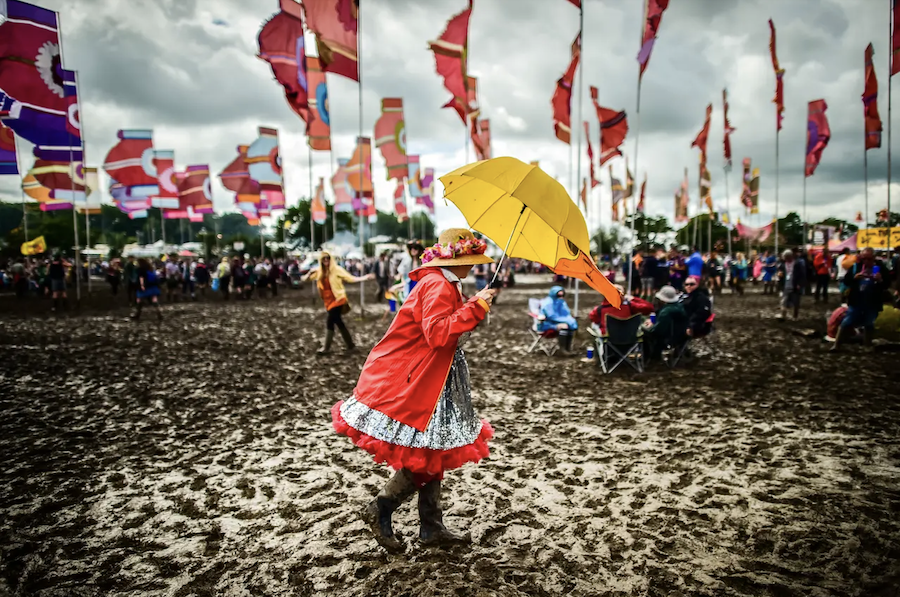The history of the Glastonbury Festival
Thousands of campers will descend upon Glastonbury in the hope of claiming a prime spot as the world-famous festival opens its doors for its 52nd year.
The Glastonbury Festival, often referred to as Glastonbury or Glasto, is a world-renowned music and performing arts event that takes place in the beautiful countryside near the village of Pilton, Somerset, England.
Founded by Michael Eavis and his wife, Jean, the festival has a rich and fascinating history that has made it an iconic cultural phenomenon.
Festival origins
 The first festival at Worthy Farm was called the Pilton Pop, Folk and Blues Festival and took place in late Summer 1970, opening the day after Jimi Hendrix died. It was attended by 1,500 people. Admission was £1, which included free camping and free milk.
The first festival at Worthy Farm was called the Pilton Pop, Folk and Blues Festival and took place in late Summer 1970, opening the day after Jimi Hendrix died. It was attended by 1,500 people. Admission was £1, which included free camping and free milk.

Glastonbury 1970
The inaugural Glastonbury Festival was inspired by the ethos of the hippie movement and the free festivals of the time. It began as a one-day event and featured performances by acts such as T. Rex and Al Stewart. Since then, the festival has evolved into a sprawling five-day extravaganza that attracts over 200,000 attendees from all corners of the globe.

The Pyramid Stage 1970
One of the defining aspects of Glastonbury is its diverse and eclectic lineup. Over the years, the festival has showcased an impressive array of musical genres and artists, ranging from rock and pop to folk, hip-hop, electronic music, and beyond. Legendary acts such as David Bowie, The Rolling Stones, Radiohead, Beyoncé, and Coldplay have graced the iconic Pyramid Stage, leaving an indelible mark on the festival’s history.

Pyramid Stage at Glastonbury Festival
In addition to music, Glastonbury offers a wide range of arts and entertainment experiences. The festival features multiple stages and performance areas, each with its own unique atmosphere and programming. From the intimate acoustic performances at the Avalon Café to the hedonistic dance parties in the Shangri-La area, there is something for every taste and inclination.
 Glastonbury is also renowned for its commitment to activism, environmentalism, and social causes. The festival has consistently championed sustainability initiatives, including extensive recycling programs, renewable energy usage, and a focus on reducing waste. It hosts a variety of workshops, talks, and debates on topics such as climate change, human rights, and social justice, providing a platform for important discussions alongside the celebration of music and arts.
Glastonbury is also renowned for its commitment to activism, environmentalism, and social causes. The festival has consistently championed sustainability initiatives, including extensive recycling programs, renewable energy usage, and a focus on reducing waste. It hosts a variety of workshops, talks, and debates on topics such as climate change, human rights, and social justice, providing a platform for important discussions alongside the celebration of music and arts.

WaterAid unveiled The Living Loos at Glastonbury Festival 2023
Throughout its history, Glastonbury has faced challenges and obstacles. In 2018, for example, the festival took a “fallow year” to allow the land to recover and to address infrastructure improvements. Despite these challenges, the festival has remained a beloved institution, cherished by both music lovers and the local community.

Glastonbury 2019. Credit: NME
Glastonbury’s cultural impact extends far beyond the festival grounds. Its influence on the global music scene is undeniable, and it has inspired the creation of numerous music festivals worldwide. The term “Glastonbury moment” has become synonymous with a transcendent and transformative live music experience.
The history of the Glastonbury Festival is one of growth, innovation, and cultural significance. From its humble beginnings in 1970 to its status as a global cultural phenomenon, Glastonbury continues to captivate audiences and push boundaries, representing the power of music, art, and collective celebration.



















